Summer School on Bioinformatics: Scientific Projects
Hello, dear community members!
In St. Petersburg, the snow fell the other day, and for summer inspiration, we’ll tell you about the event held in July 2014. Namely - the summer school on bioinformatics , organized by the Institute of Bioinformatics and SPbAU RAS with the support of St. Petersburg State University. About the first school on Habré wrote here and here .
This article will discuss an interesting experiment - educational and scientific projects within the school: from the idea to the result.
')

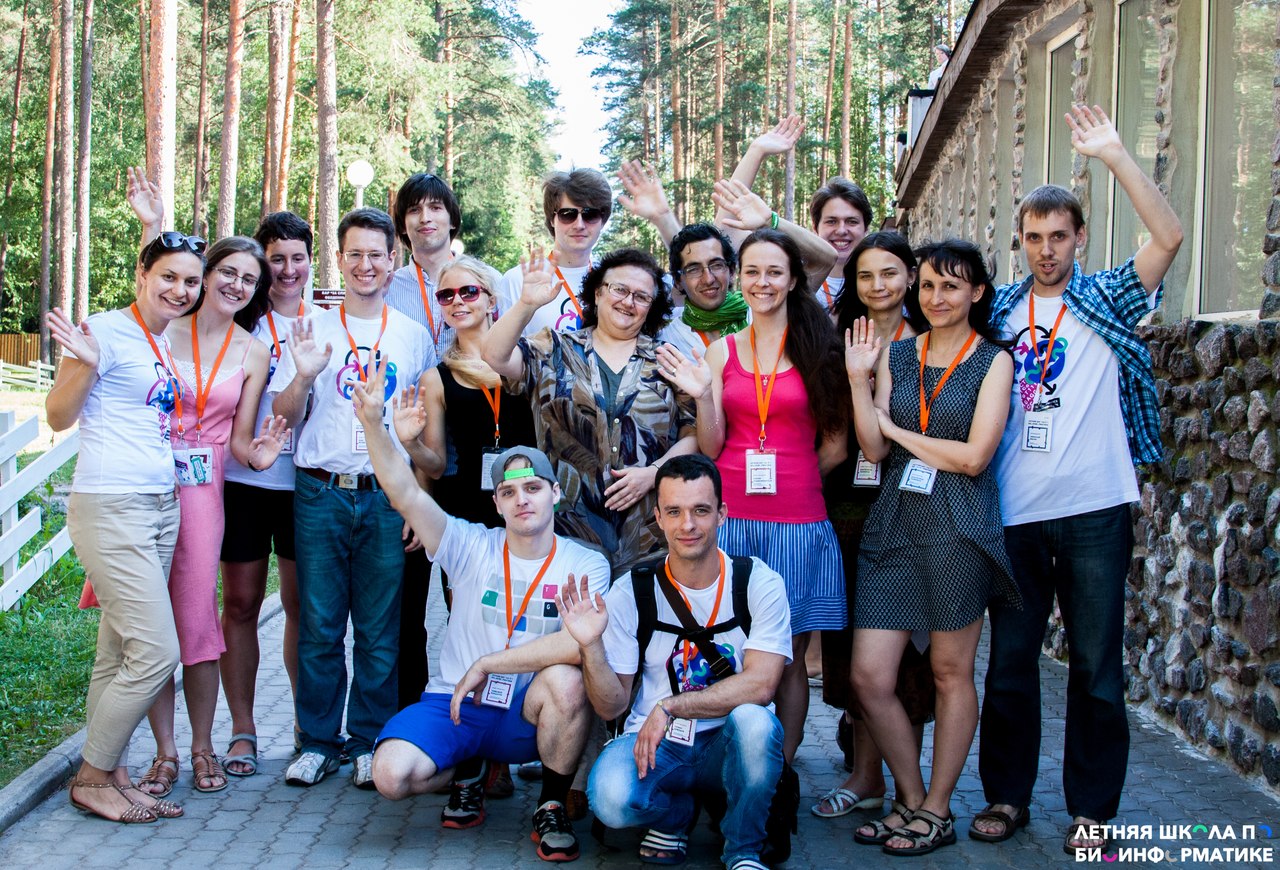
This article was written by the joint efforts of several authors, including Timofey Bondarev, German Demidov and Oleg Yasnev, second-year graduate students of St. Petersburg Academic University in the direction of Algorithmic Bioinformatics. At school, they as volunteers helped to conduct the practice, and Herman and Oleg also supervised research projects.
It is worth noting that further in the text, when you meet the word "we", it will not be about someone separately, but about a large and friendly team of organizers and volunteers
The school was held in a country hotel "Raivola" near St. Petersburg and lasted for 6 days, during which lectures and seminars were held on various topics in two streams: for biologists and for computer scientists / mathematicians. In addition, the participants themselves made presentations at the mini-conference and poster session. Out of 450 applications for the school, 100 undergraduate and postgraduate students in physics and mathematics, computer and biological specialties from different parts of Russia, the CIS and even abroad were selected.
The classes were conducted by employees of laboratories and companies in St. Petersburg and Moscow, as well as some foreign universities. The participants greeted Philip Haytovich (Shanghai Institutes for Biological Sciences; Skoltech) and Alexei Kondrashov (University of Michigan; MSU), who were remembered by many from the first school. Elena Grigorenko (Yale University), Ilya Serebriysky (Fox Chase Cancer Center), Alla Lapidus (St. Petersburg State University, SPbAU RAS) and many others also spoke. Like last year, the school was supported by RVC, JetBrains and BIOCAD, the Dynasty and RFBR funds — thanks to this, participation in the school was absolutely free for all. Materials posted in open access .
In addition to studying, time was allocated for entertaining events: the competitions “Cheater and Sequencer”, “Collect the Genome”, a graduation party ... And on the hotel grounds, the trampolines were the most popular =)


How did the idea of conducting research projects at summer school come about? After all, it lasted only 6 days? Of course, no serious science can be done in such a period. However, participants of different levels were invited to the school and initially the question was: how to make the school useful for those who already know the material of the basic lectures?
Looking ahead, let's say that the participants in the reviews noted the projects as one of the most interesting parts of the school and recommended to involve all 100 people in them in the future.
Initially, too complex tasks were proposed for 5 days.
After consulting, we decided that stochastic simulation, low-level optimization and other specialized things are not for the summer school. Most of the participants will be bored and incomprehensible. A science project at a school should be educational, entertaining and scientific at the same time. Like a hackathon.
Most potential project managers did not share our enthusiasm.
Even many of those who gladly offered projects for scientific work to students of the Institute of Bioinformatics said that 5 days for work is not serious. However, some responded, and as a result, there were 6 team projects with different entry thresholds (those who wish can read the descriptions here ).
 How to fit the work on research projects in a rich schedule.
How to fit the work on research projects in a rich schedule.
The projects were designed for more experienced participants who are not interested in introductory lectures. Work on them was assumed instead of these occupations and in the evenings in their spare time. Morning meetings with curators and several more “slots” during the week were also provided. But time is still not enough. It was possible to stop at 3 am at the hotel bar and see students there. Think they were having fun and drinking beer? No, there was a quick wi-fi, and they worked on projects!
Too many participants.
Initially, 15-25 people were planned for 3-10 projects. What happened? 62 people on 6 projects. All received project descriptions in advance, so there was an opportunity to study them and make a decision. Perhaps there was still not enough time or the wording looked frightening, but less than 20 people signed up before school began. After the presentation of projects, smiling leaders wanted to become many times more! After deliberation, the organizers and project managers decided to support the motivation and accept everyone, which greatly influenced the process.
So, more than half of the school participants signed up for the projects, and the teams were uneven. How did the curators handle this?
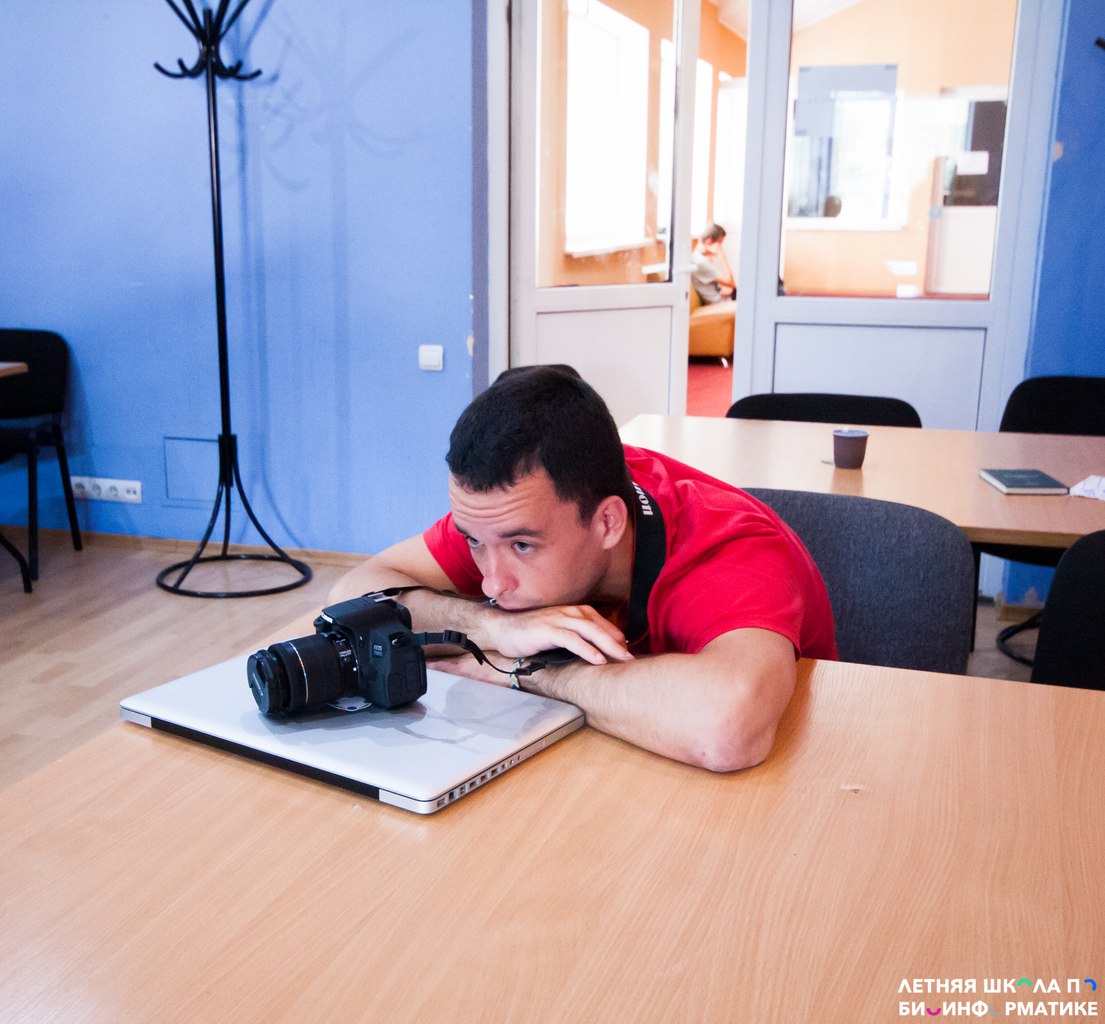
Hermann (his cheerful photo on the right) turned out to have 10 people in his work on the population history of polar bears, and he decided to give them 5 different tasks in one project. What came of it: the students moved very quickly and the curator also had to go along with them in five different directions, which took a lot of time.
By Oleg Yasnev for the analysis of ChIP-seq data (the task was proposed by UniPro), 16 students enrolled, and for Mikhail Raiko, the search for pathogenic sites was 13. Oleg and Mikhail broke the children up into roughly balanced groups so that each one did a single project independently. As a result, work on projects was carried out mainly in their free time, and the guys grouped together according to the situation. By the end of the school, all participants, in fact, united back, which was not part of the original plan. Pavel Dobrynin did not break the students into groups, worked at once with all on three projects and at the same time remained in a sober mind =)
As experience has shown, it is not very effective to divide students in one project into subgroups and give them the same task. The best of all was the option when each subgroup was given an individual task, a subtask of a big task. But here it is worth counting your strength.
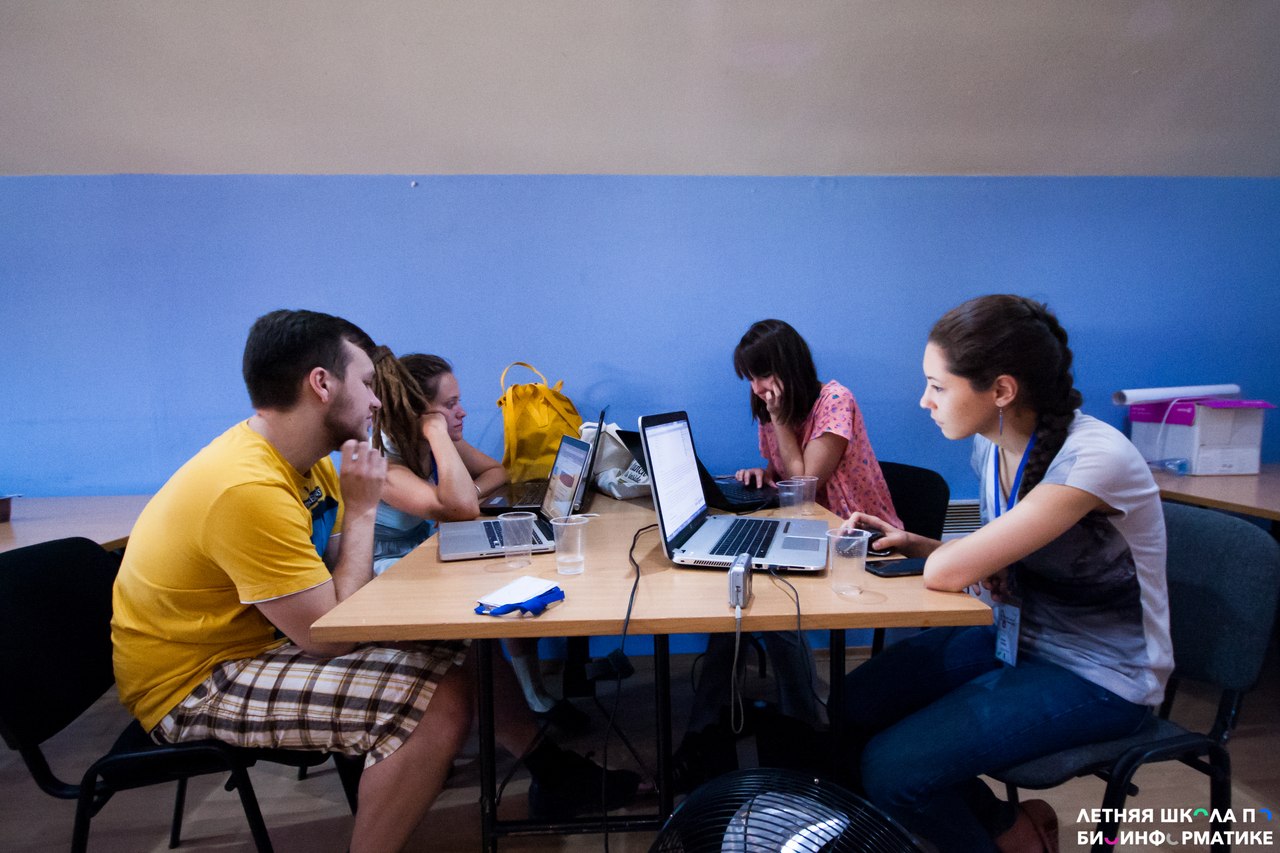 It was necessary to work in the conditions of problems with the Internet, as the local wi-fi could not withstand one hundred people. If you came across a group of students working in an unsuitable place, you could be sure that there is internet.
It was necessary to work in the conditions of problems with the Internet, as the local wi-fi could not withstand one hundred people. If you came across a group of students working in an unsuitable place, you could be sure that there is internet.
The participants worked patiently and actively mastered the new knowledge, including that gained in the school classes. For example, a biology student at the morning seminar wrote the first ever scripts in Python and immediately took advantage of their results in the project. As planned, lectures, practice and work on scientific tasks complemented each other. In this direction, there is room to grow, interweaving programs of lectures and projects more closely.
However, it was necessary to make sure that students did not get too carried away and did not miss useful lessons - the participants plunged into the project so much that they were ready not to go to an interesting lecture by a famous scientist for their own words. It is pleasant to realize that the projects turned out to be so fascinating and withstand even such serious competition, but I wanted, of course, that they were not at the expense of useful lectures.
In this section, I want to collect a few simple but useful things that have greatly helped in organizing work on projects.
It is important to ensure that students learn git and commit or both the code and the results (reports, graphs, statistics, etc.). It is not only useful, it is necessary! Only keeping a repository and tracking changes saved Herman with his five subprojects from a zombie state by the end of the school.
Pre-prepared instructions also helped a lot. In advance, almost no one reads them, but in the process they will definitely come in handy. When you have 10–20 people, each of whom moves at his own pace, it’s impossible to be at the same time with everyone.
Especially for the school, we have compiled a git manual , focusing on the degree of clarity on biology students. It was written exactly those scenarios that were supposed to arise in the work on the project. In a pinch, the manual from the Internet is also suitable, as long as it is short enough and focused on the right audience. By giving the student such a certificate, you can quickly prompt the desired paragraph or train a person in just five minutes.
The project manual is also very helpful. Students will always have what to do next, and they will not stand idle if there is no curator nearby. In the first couple of days, when there were still many other issues to be solved, the training manual was a salvation.
In addition, a preliminary walkthrough of the project will save from unpleasant surprises. Of course, problem situations bring the project closer to real life, but are nevertheless undesirable in conditions of short time.
Finally, students are happy to help and explain to each other themselves . By teaching one person something, you actually teach another person five; and those who have advanced further on the project will be able to prompt the “lagging behind.”
It became clear very quickly - projects are very popular because they give an opportunity to try themselves in solving real problems in the format of total immersion. The situation at the school is the most favorable: you will not be dismissed from work, they will not give a bad grade and are ready to help at any time of the day or night. Participants did not hesitate to ask questions, ask for help and worked in pleasure, which gave a good result. In addition, it is a convenient and more individualized format of training than lectures and general practices.
By the way, how much do you think it came to the end? To be honest, when 60 people signed up, there were suspicions that in a couple of days this number would seriously decrease. But the students who have changed their minds can be counted on the fingers of one hand. Those who have reached the end are really great.
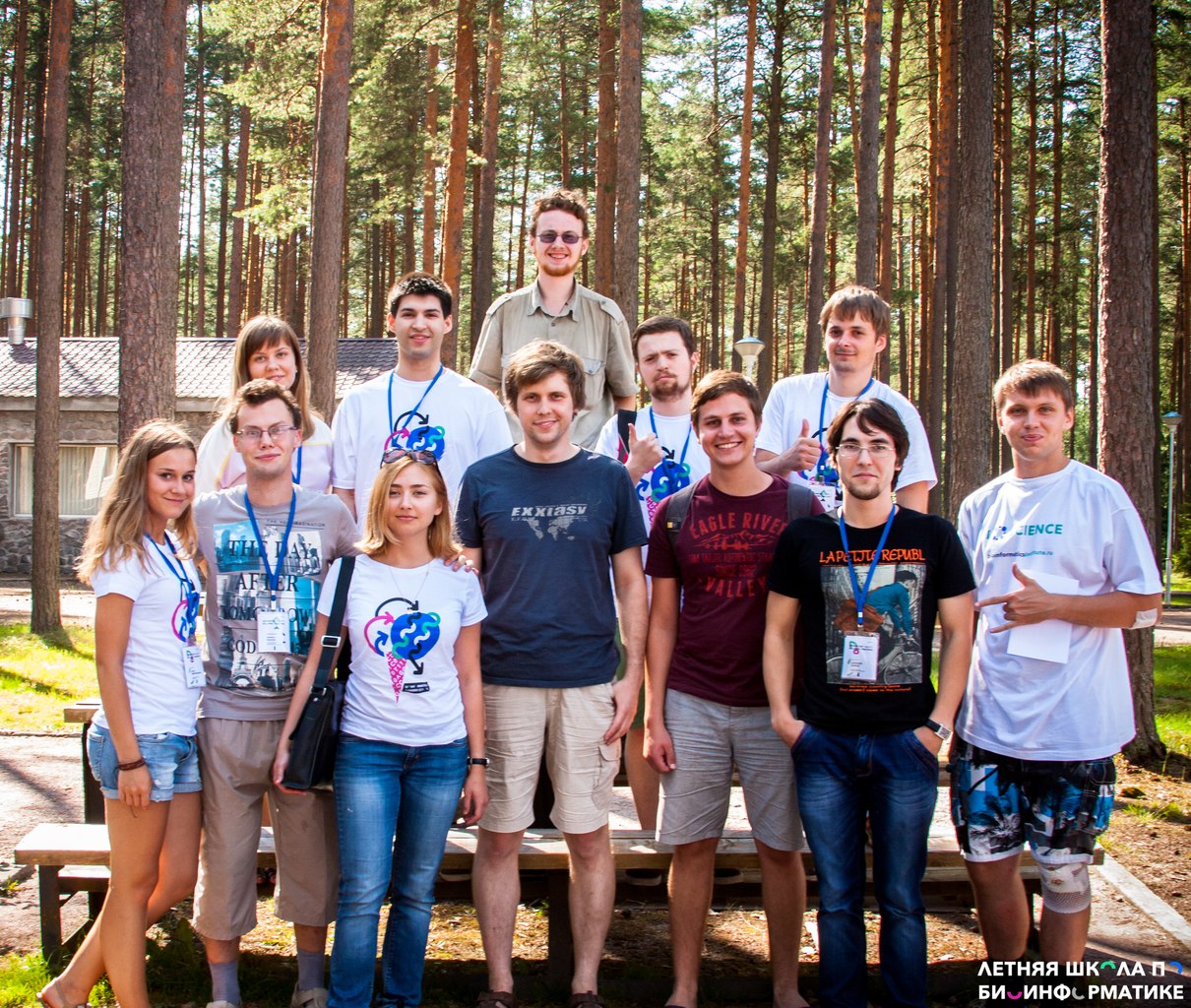
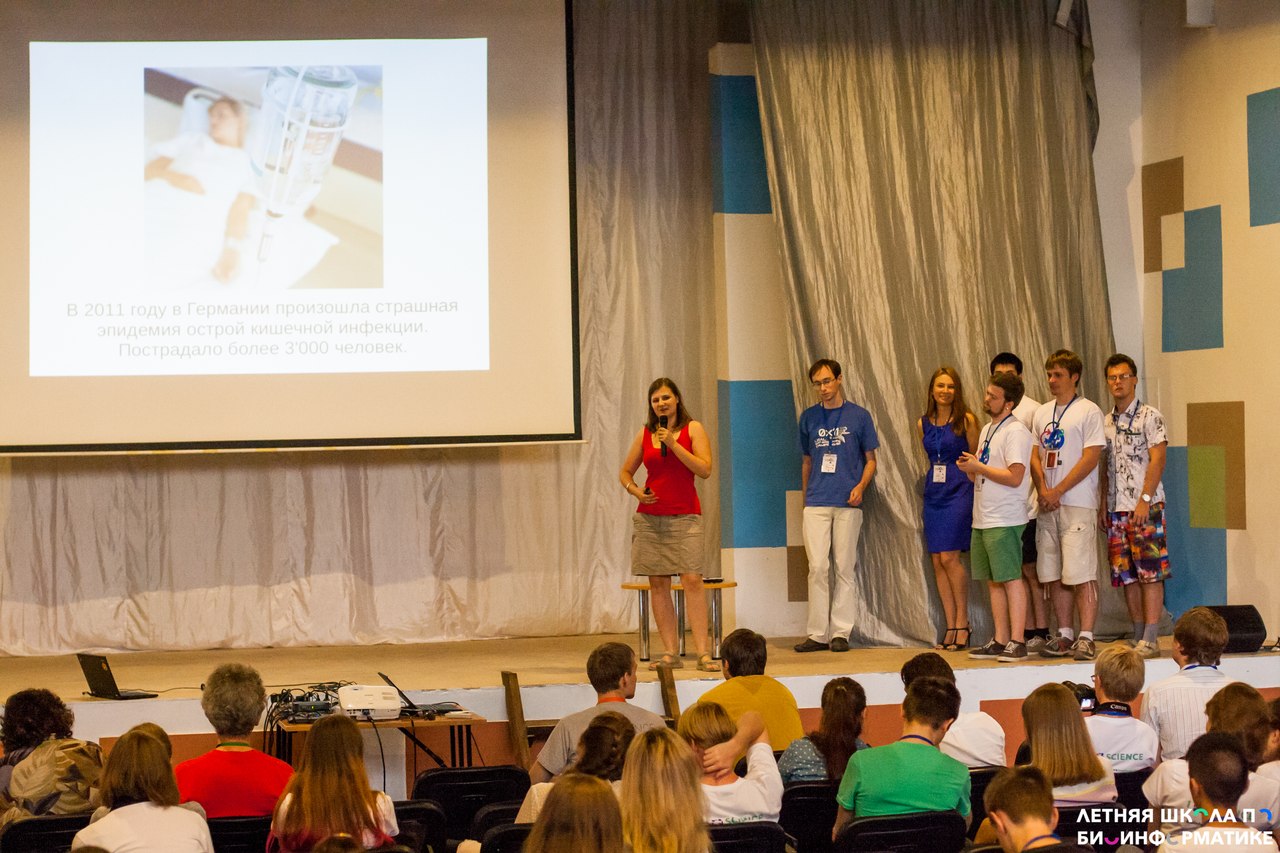
On the last day of school there were presentations of the results of the work on the projects before all the participants and the jury. It's nice to see that all the teams achieved very good results and they really had something to tell.
Who won? As Alla Lapidus said, according to the Russian tradition, the bear won (a project dedicated to the study of the history of the polar bear population). But the main victory was that all the guys were not afraid to plunge into the unknown and difficult and reached the end. They learned a lot, progressed significantly, and were also full of enthusiasm and plans for the future. And this is great!

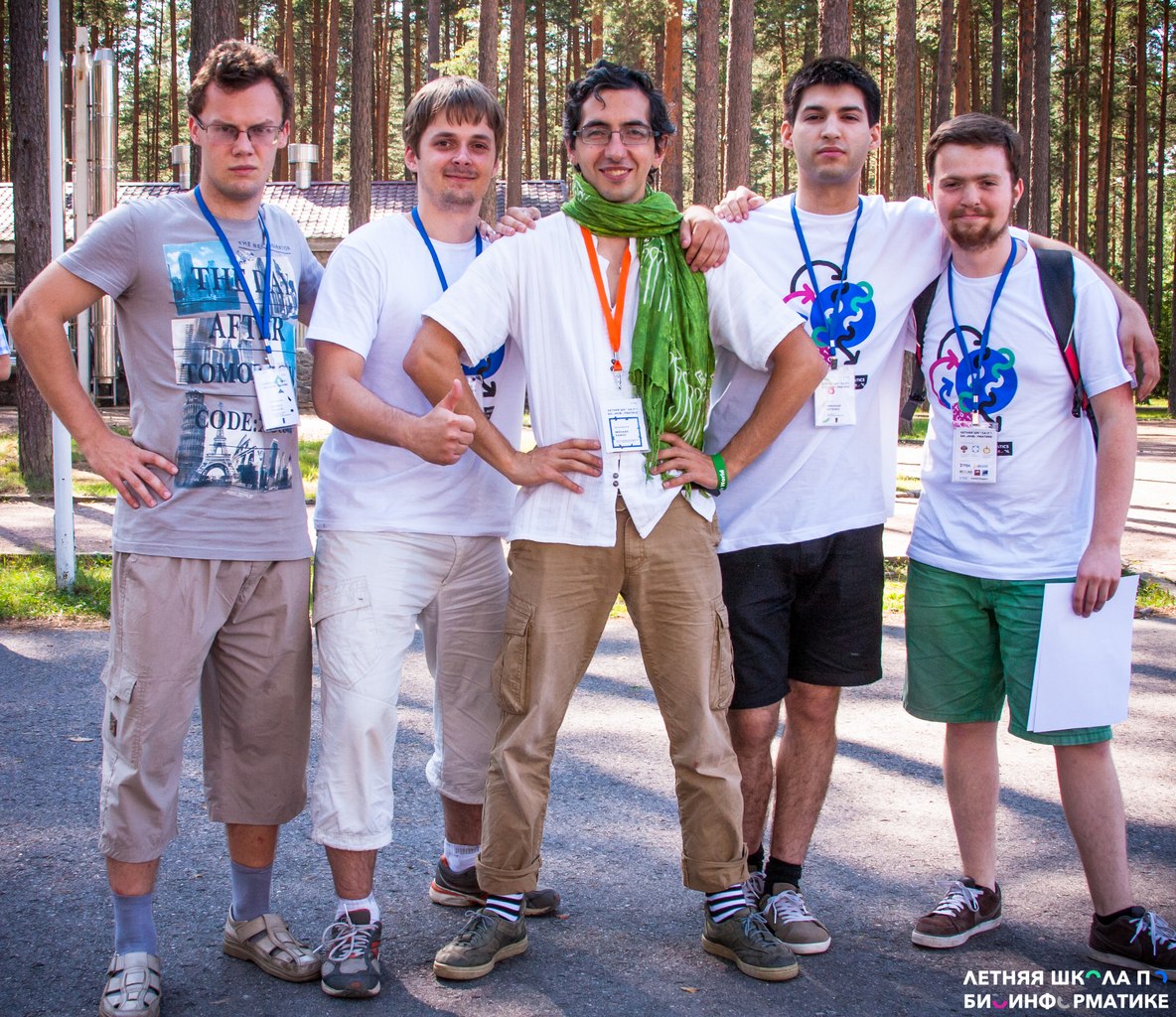
What did the school give the authors? According to them, the most important thing is an invaluable experience and a lot of interesting acquaintances.
Timofey so successfully assisted in class that he received an offer to conduct a course in Python at the Institute of Bioinformatics, and now he is already reading the second semester. Herman was inspired and became a project manager for two Institute students in the fall semester. Oleg summer school helped to find a suitable interesting topic for master's work, the lack of which worried him. We hope that the school was useful for every participant!
If you are also interested, this year the summer school on bioinformatics will be held again, this time on July 20-25 in Moscow. The application can be submitted until May 25. And if you feel the strength and desire to study bioinformatics, then you will be happy to see at interviews at the Institute of Bioinformatics and St. Petersburg Academic University (where, in addition to bioinformatics, they are also gaining in areas of Software Engineering and Theoretical Computer Science).
See you!
In St. Petersburg, the snow fell the other day, and for summer inspiration, we’ll tell you about the event held in July 2014. Namely - the summer school on bioinformatics , organized by the Institute of Bioinformatics and SPbAU RAS with the support of St. Petersburg State University. About the first school on Habré wrote here and here .
This article will discuss an interesting experiment - educational and scientific projects within the school: from the idea to the result.
')

A couple of words about the authors

This article was written by the joint efforts of several authors, including Timofey Bondarev, German Demidov and Oleg Yasnev, second-year graduate students of St. Petersburg Academic University in the direction of Algorithmic Bioinformatics. At school, they as volunteers helped to conduct the practice, and Herman and Oleg also supervised research projects.
It is worth noting that further in the text, when you meet the word "we", it will not be about someone separately, but about a large and friendly team of organizers and volunteers
Little about the school itself
The school was held in a country hotel "Raivola" near St. Petersburg and lasted for 6 days, during which lectures and seminars were held on various topics in two streams: for biologists and for computer scientists / mathematicians. In addition, the participants themselves made presentations at the mini-conference and poster session. Out of 450 applications for the school, 100 undergraduate and postgraduate students in physics and mathematics, computer and biological specialties from different parts of Russia, the CIS and even abroad were selected.
The classes were conducted by employees of laboratories and companies in St. Petersburg and Moscow, as well as some foreign universities. The participants greeted Philip Haytovich (Shanghai Institutes for Biological Sciences; Skoltech) and Alexei Kondrashov (University of Michigan; MSU), who were remembered by many from the first school. Elena Grigorenko (Yale University), Ilya Serebriysky (Fox Chase Cancer Center), Alla Lapidus (St. Petersburg State University, SPbAU RAS) and many others also spoke. Like last year, the school was supported by RVC, JetBrains and BIOCAD, the Dynasty and RFBR funds — thanks to this, participation in the school was absolutely free for all. Materials posted in open access .
In addition to studying, time was allocated for entertaining events: the competitions “Cheater and Sequencer”, “Collect the Genome”, a graduation party ... And on the hotel grounds, the trampolines were the most popular =)


More about research projects
Idea
How did the idea of conducting research projects at summer school come about? After all, it lasted only 6 days? Of course, no serious science can be done in such a period. However, participants of different levels were invited to the school and initially the question was: how to make the school useful for those who already know the material of the basic lectures?
Looking ahead, let's say that the participants in the reviews noted the projects as one of the most interesting parts of the school and recommended to involve all 100 people in them in the future.
How it all began: problems
Initially, too complex tasks were proposed for 5 days.
After consulting, we decided that stochastic simulation, low-level optimization and other specialized things are not for the summer school. Most of the participants will be bored and incomprehensible. A science project at a school should be educational, entertaining and scientific at the same time. Like a hackathon.
Most potential project managers did not share our enthusiasm.
Even many of those who gladly offered projects for scientific work to students of the Institute of Bioinformatics said that 5 days for work is not serious. However, some responded, and as a result, there were 6 team projects with different entry thresholds (those who wish can read the descriptions here ).
 How to fit the work on research projects in a rich schedule.
How to fit the work on research projects in a rich schedule.The projects were designed for more experienced participants who are not interested in introductory lectures. Work on them was assumed instead of these occupations and in the evenings in their spare time. Morning meetings with curators and several more “slots” during the week were also provided. But time is still not enough. It was possible to stop at 3 am at the hotel bar and see students there. Think they were having fun and drinking beer? No, there was a quick wi-fi, and they worked on projects!
Too many participants.
Initially, 15-25 people were planned for 3-10 projects. What happened? 62 people on 6 projects. All received project descriptions in advance, so there was an opportunity to study them and make a decision. Perhaps there was still not enough time or the wording looked frightening, but less than 20 people signed up before school began. After the presentation of projects, smiling leaders wanted to become many times more! After deliberation, the organizers and project managers decided to support the motivation and accept everyone, which greatly influenced the process.
Expectations vs. reality: work process
Curators
So, more than half of the school participants signed up for the projects, and the teams were uneven. How did the curators handle this?

Hermann (his cheerful photo on the right) turned out to have 10 people in his work on the population history of polar bears, and he decided to give them 5 different tasks in one project. What came of it: the students moved very quickly and the curator also had to go along with them in five different directions, which took a lot of time.
By Oleg Yasnev for the analysis of ChIP-seq data (the task was proposed by UniPro), 16 students enrolled, and for Mikhail Raiko, the search for pathogenic sites was 13. Oleg and Mikhail broke the children up into roughly balanced groups so that each one did a single project independently. As a result, work on projects was carried out mainly in their free time, and the guys grouped together according to the situation. By the end of the school, all participants, in fact, united back, which was not part of the original plan. Pavel Dobrynin did not break the students into groups, worked at once with all on three projects and at the same time remained in a sober mind =)
As experience has shown, it is not very effective to divide students in one project into subgroups and give them the same task. The best of all was the option when each subgroup was given an individual task, a subtask of a big task. But here it is worth counting your strength.
Students
 It was necessary to work in the conditions of problems with the Internet, as the local wi-fi could not withstand one hundred people. If you came across a group of students working in an unsuitable place, you could be sure that there is internet.
It was necessary to work in the conditions of problems with the Internet, as the local wi-fi could not withstand one hundred people. If you came across a group of students working in an unsuitable place, you could be sure that there is internet.The participants worked patiently and actively mastered the new knowledge, including that gained in the school classes. For example, a biology student at the morning seminar wrote the first ever scripts in Python and immediately took advantage of their results in the project. As planned, lectures, practice and work on scientific tasks complemented each other. In this direction, there is room to grow, interweaving programs of lectures and projects more closely.
However, it was necessary to make sure that students did not get too carried away and did not miss useful lessons - the participants plunged into the project so much that they were ready not to go to an interesting lecture by a famous scientist for their own words. It is pleasant to realize that the projects turned out to be so fascinating and withstand even such serious competition, but I wanted, of course, that they were not at the expense of useful lectures.
Useful tips
In this section, I want to collect a few simple but useful things that have greatly helped in organizing work on projects.
It is important to ensure that students learn git and commit or both the code and the results (reports, graphs, statistics, etc.). It is not only useful, it is necessary! Only keeping a repository and tracking changes saved Herman with his five subprojects from a zombie state by the end of the school.
Pre-prepared instructions also helped a lot. In advance, almost no one reads them, but in the process they will definitely come in handy. When you have 10–20 people, each of whom moves at his own pace, it’s impossible to be at the same time with everyone.
Especially for the school, we have compiled a git manual , focusing on the degree of clarity on biology students. It was written exactly those scenarios that were supposed to arise in the work on the project. In a pinch, the manual from the Internet is also suitable, as long as it is short enough and focused on the right audience. By giving the student such a certificate, you can quickly prompt the desired paragraph or train a person in just five minutes.
The project manual is also very helpful. Students will always have what to do next, and they will not stand idle if there is no curator nearby. In the first couple of days, when there were still many other issues to be solved, the training manual was a salvation.
In addition, a preliminary walkthrough of the project will save from unpleasant surprises. Of course, problem situations bring the project closer to real life, but are nevertheless undesirable in conditions of short time.
Finally, students are happy to help and explain to each other themselves . By teaching one person something, you actually teach another person five; and those who have advanced further on the project will be able to prompt the “lagging behind.”
findings
It became clear very quickly - projects are very popular because they give an opportunity to try themselves in solving real problems in the format of total immersion. The situation at the school is the most favorable: you will not be dismissed from work, they will not give a bad grade and are ready to help at any time of the day or night. Participants did not hesitate to ask questions, ask for help and worked in pleasure, which gave a good result. In addition, it is a convenient and more individualized format of training than lectures and general practices.
By the way, how much do you think it came to the end? To be honest, when 60 people signed up, there were suspicions that in a couple of days this number would seriously decrease. But the students who have changed their minds can be counted on the fingers of one hand. Those who have reached the end are really great.


Total
On the last day of school there were presentations of the results of the work on the projects before all the participants and the jury. It's nice to see that all the teams achieved very good results and they really had something to tell.
Who won? As Alla Lapidus said, according to the Russian tradition, the bear won (a project dedicated to the study of the history of the polar bear population). But the main victory was that all the guys were not afraid to plunge into the unknown and difficult and reached the end. They learned a lot, progressed significantly, and were also full of enthusiasm and plans for the future. And this is great!


Afterword
What did the school give the authors? According to them, the most important thing is an invaluable experience and a lot of interesting acquaintances.
Timofey so successfully assisted in class that he received an offer to conduct a course in Python at the Institute of Bioinformatics, and now he is already reading the second semester. Herman was inspired and became a project manager for two Institute students in the fall semester. Oleg summer school helped to find a suitable interesting topic for master's work, the lack of which worried him. We hope that the school was useful for every participant!
If you are also interested, this year the summer school on bioinformatics will be held again, this time on July 20-25 in Moscow. The application can be submitted until May 25. And if you feel the strength and desire to study bioinformatics, then you will be happy to see at interviews at the Institute of Bioinformatics and St. Petersburg Academic University (where, in addition to bioinformatics, they are also gaining in areas of Software Engineering and Theoretical Computer Science).
See you!
Source: https://habr.com/ru/post/289894/
All Articles